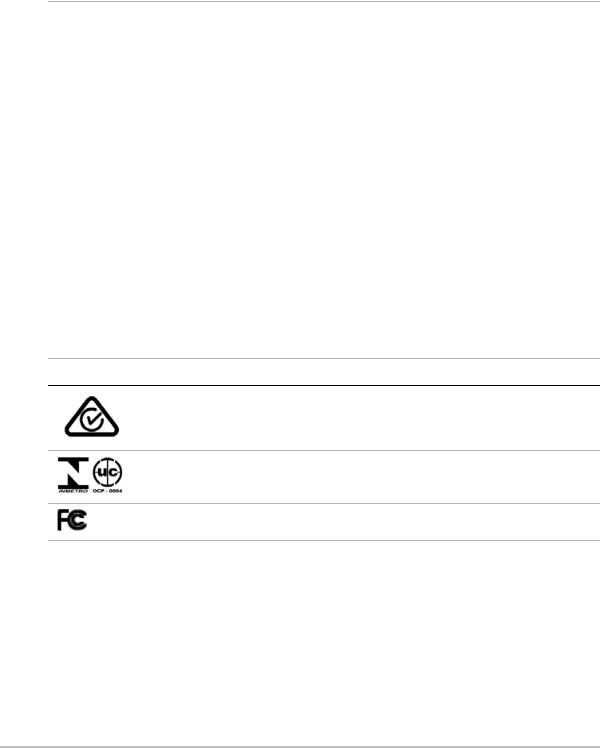SonoSite iLook User manual

iLook® User Guide Supplement
Ergänzung zum iLook®
Benutzerhandbuch
Suplemento del Manual para el usuario de iLook®
Guide d'utilisation iLook® – Supplement
Supplemento al Manuale dell'utente iLook®
Suplemento do Manual do Usuário do iLook®
Tillæg til iLook® brugervejledning
iLook® Tillägg till användarhandbok
English
Deutsch
Español
Français
Italiano
Português
Dansk
Svenska

ii

SonoSite®
iii

SonoSite, Inc.
21919 30th Drive SE
Bothell, WA 98021 USA
T: 1-888-482-9449 or 1-425-951-1200 F: 1-425-951-1201
SonoSite Ltd
Alexander House
40A Wilbury Way
Hitchin
Herts SG4 0AP
UK
T: +44-1462-444800
F: +44-1462-444801
Caution: Federal (United States) law restricts this device to sale by or on the order of a physician.
Non-SonoSite product names may be trademarks or registered trademarks of their respective owners.
SonoSite products may be covered by one or more of the following U.S. patents: 4454884, 4462408, 4469106, 4474184, 4475376, 4515017, 4534357, 4542653, 4543960, 4552607, 4561807, 4566035, 4567895, 4581636, 4591355, 4603702, 4607642, 4644795, 4670339, 4773140, 4817618, 4883059, 4887306, 5016641, 5050610, 5095910, 5099847, 5123415, 5158088, 5197477, 5207225, 5215094, 5226420, 5226422, 5233994, 5255682, 5275167, 5287753, 5305756, 5353354, 5365929, 5381795, 5386830, 5390674, 5402793, 5,423,220, 5438994, 5450851, 5456257, 5471989, 5471990, 5474073, 5476097, 5479930, 5482045, 5482047, 5485842, 5492134, 5517994, 5529070, 5546946, 5555887, 5603323, 5606972, 5617863, 5634465, 5634466, 5636631, 5645066, 5648942, 5669385, 5706819, 5715823, 5718229, 5720291, 5722412, 5752517, 5762067, 5782769, 5800356, 5817024, 5833613, 5846200, 5860924, 5893363, 5916168, 5951478, 6036643, 6102863, 6104126, 6113547, 6117085, 6142946, 6203498 B1, 6371918, 6135961, 6364839, 6383139, 6416475, 6447451, 6471651, 6569101, 6575908, 6604630, 6648826, 6835177, D0280762, D0285484, D0286325, D0300241, D0306343, D0328095, D0369307, D0379231, D456509, D461895, 6817982, D509900, 10/062179. Other patents pending.
P05021-03 11/2006
Copyright 2006 by SonoSite, Inc.
All rights reserved.
iv

iLook User Guide Supplement |
|
Electrical Safety Classification ............................................................................................................... |
1 |
Electrical Safety .......................................................................................................................................... |
1 |
Biological Safety ......................................................................................................................................... |
2 |
Electromagnetic Compatibility (EMC) ................................................................................................ |
2 |
The ALARA Principle ................................................................................................................................. |
6 |
Output Display ............................................................................................................................................ |
7 |
Transducer Surface Temperatures ....................................................................................................... |
7 |
Labeling Symbols ...................................................................................................................................... |
8 |
Chapter 5: Safety
The following information is a supplement to the iLook User Guide. Please read the information before using the iLook® 15 personal imaging tool or the iLook® 25 personal imaging tool.
Electrical Safety Classification
Class I equipment |
Ultrasound system powered from the power supply |
Class II equipment |
Ultrasound system not connected to the power supply |
|
(battery only) |
Type BF applied parts |
Ultrasound transducers |
IPX-7 (watertight equipment) |
Ultrasound transducers |
Non AP/APG |
Ultrasound system power supply and peripherals. |
|
Equipment is not suitable for use in the presence of |
|
flammable anaesthetics. |
Electrical Safety
WARNING: To avoid the risk of electric shock, the printer accessory must be connected to the same grounding means as the ultrasound system.
English
Deutsch
Español
Français
Italiano
Português
Dansk
Svenska
Chapter 5: Safety |
1 |

Biological Safety
WARNING: To avoid the risk of a burn hazard, do not use the transducer with high frequency surgical equipment. Such a hazard may occur in the event of a defect in the high frequency surgical neutral electrode connection.
Electromagnetic Compatibility (EMC)
The ultrasound system has been tested and found to comply with the electromagnetic compatibility (EMC) limits for medical devices to IEC 60601-1-2:2001. These limits are designed to provide reasonable protection against harmful interference in a typical medical installation.
Caution: Medical electrical equipment requires special precautions regarding EMC and must be installed and operated according to these instructions. It is possible that high levels of radiated or conducted radio-frequency electromagnetic interference (EMI) from portable and mobile RF communications equipment or other strong or nearby radio-frequency sources, could result in performance disruption of the ultrasound system. Evidence of disruption may include image degradation or distortion, erratic readings, equipment ceasing to operate, or other incorrect functioning. If this occurs, survey the site to determine the source of disruption, and take the following actions to eliminate the source(s).
•Turn equipment in the vicinity off and on to isolate disruptive equipment.
•Relocate or re-orient interfering equipment.
•Increase distance between interfering equipment and your ultrasound system.
•Manage use of frequencies close to ultrasound system frequencies.
•Remove devices that are highly susceptible to EMI.
•Lower power from internal sources within facility control (such as paging systems).
•Label devices susceptible to EMI.
•Educate clinical staff to recognize potential EMI-related problems.
•Eliminate or reduce EMI with technical solutions (such as shielding).
•Restrict use of personal communicators (cell phones, computers) in areas with devices susceptible to EMI.
•Share relevant EMI information with others, particularly when evaluating new equipment purchases which may generate EMI.
•Purchase medical devices that comply with IEC 60601-1-2 EMC Standards.
To avoid the risk of increased electromagnetic emissions or decreased immunity, use only accessories and peripherals recommended by SonoSite. Connection of accessories and peripherals not recommended by SonoSite could result in malfunctioning of your ultrasound system or other medical electrical devices in the area. Contact SonoSite or your local representative for a list of accessories and peripherals available from or recommended by SonoSite.
2Chapter 5: Safety

Caution: Electrostatic discharge (ESD), or static shock, is a naturally occurring phenomenon. ESD is common in conditions of low humidity, which can be caused by heating or air conditioning. Static shock is a discharge of the electrical energy from a charged body to a lesser or non-charged body. The degree of discharge can be significant enough to cause damage to a transducer or an ultrasound system. The following precautions can help reduce ESD: anti-static spray on carpets, anti-static spray on linoleum, and anti-static mats.
Manufacturer’s Declaration
Table 1 and Table 2 document the intended use environment and EMC compliance levels of the system. For maximum performance, ensure that the system is used in the environments described in this table.
The system is intended for use in the electromagnetic environment specified below.
Table 1: Manufacturer’s Declaration - Electromagnetic Emissions
Emissions Test |
Compliance |
Electromagnetic Environment |
|
|
|
RF emissions |
Group 1 |
The SonoSite ultrasound system uses RF energy only |
ClSPR 11 |
|
for its internal function. Therefore, its RF emissions |
|
|
are very low and are not likely to cause any |
|
|
interference in nearby electronic equipment. |
|
|
|
RF emissions |
Class A |
The SonoSite ultrasound system is suitable for use in |
ClSPR 11 |
|
all establishments other than domestic and those |
|
|
directly connected to the public low-voltage power |
|
|
supply network which supplies buildings used for |
|
|
domestic purposes. |
|
|
|
Harmonic emissions |
Class A |
|
IEC 61000-3-2 |
|
|
|
|
|
Voltage fluctuations/ |
Complies |
|
flicker emissions |
|
|
IEC 61000-3-3 |
|
|
|
|
|
English
Deutsch
Español
Français
Italiano
Português
Dansk
Svenska
Chapter 5: Safety |
3 |

The system is intended for use in the electromagnetic environment specified below.
Table 2: Manufacturer’s Declaration - Electromagnetic Immunity
Immunity Test |
IEC 60601 Test Level |
Compliance Level |
Electromagnetic Environment |
|
|
|
|
|
|
Electrostatic |
2.0KV, 4.0KV, 6.0KV |
2.0KV, 4.0KV, 6.0KV |
Floors should be wood, concrete or |
|
Discharge (ESD) |
contact |
contact |
ceramic tile. If floors are covered with |
|
IEC 61000-4-2 |
2.0KV, 4.0KV, 8.0KV air |
2.0KV, 4.0KV, 8.0KV |
synthetic material, the relative humidity |
|
|
|
air |
should be at least 30%. |
|
|
|
|
|
|
Electrical fast |
2KV on the mains |
2KV on the mains |
Mains power quality should be that of a |
|
Transient burst |
1KV on signal lines |
1KV on signal lines |
typical commercial or hospital |
|
IEC 61000-4-4 |
|
|
environment. |
|
|
|
|
|
|
Surge |
0.5KV, 1.0KV, 2.0KV on |
0.5KV, 1.0KV, 2.0KV |
Mains power quality should be that of a |
|
IEC 61000-4-5 |
AC power lines to |
on AC power lines |
typical commercial or hospital |
|
|
ground |
to ground |
environment. |
|
|
0.5KV, 1.0KV on AC |
0.5KV, 1.0KV on AC |
|
|
|
power lines to lines |
power lines to |
|
|
|
|
lines |
|
|
|
|
|
|
|
Voltage dips, |
>5% UT |
>5% UT |
Mains power quality should be that of a |
|
short |
(>95% dip in UT) for |
(>95% dip in UT) |
typical commercial or hospital |
|
interruptions |
0.5 cycle |
for 0.5 cycle |
environment. If the user of the SonoSite |
|
and voltage |
ultrasound system requires continued |
|||
40% UT |
40% UT |
|||
variations on |
operation during power mains |
|||
(60% dip In UT) for 5 |
(60% dip In UT) for |
|||
power supply |
interruptions, it is recommended that |
|||
cycles |
5 cycles |
|||
input lines |
the SonoSite ultrasound system be |
|||
70% UT |
70% UT |
|||
IEC 61000-4-11 |
powered from an uninterruptible power |
|||
|
(30% dip in UT) for 25 |
(30% dip in UT) for |
supply or a battery. |
|
|
cycles |
25 cycles |
|
|
|
>5% UT |
>5% UT |
|
|
|
(>95% dip In UT) for 5s |
(>95% dip In UT) |
|
|
|
|
for 5s |
|
|
|
|
|
|
|
Power |
3 A/m |
3 A/m |
If image distortion occurs, it may be |
|
Frequency |
|
|
necessary to position the SonoSite |
|
Magnetic Field |
|
|
ultrasound system further from sources |
|
IEC 61000-4-8 |
|
|
of power frequency magnetic fields or |
|
|
|
|
to install magnetic shielding. The power |
|
|
|
|
frequency magnetic field should be |
|
|
|
|
measured in the Intended installation |
|
|
|
|
location to assure that it is sufficiently |
|
|
|
|
low. |
|
|
|
|
|
4Chapter 5: Safety

Table 2: Manufacturer’s Declaration - Electromagnetic Immunity (Continued)
Immunity Test |
IEC 60601 Test Level |
Compliance Level |
Electromagnetic Environment |
|
|
|
|
|
|
Conducted RF |
3 Vrms |
3 Vrms |
Portable and mobile RF |
|
IEC 61000-4-6 |
150 kHz to 80 MHz |
|
communications equipment should be |
|
|
|
|
used no closer to any part of the |
|
|
|
|
SonoSite ultrasound system including |
|
|
|
|
cables, than the recommended |
|
|
|
|
separation distance calculated from the |
|
|
|
|
equation applicable to the frequency of |
|
|
|
|
the transmitter. |
|
|
|
|
Recommended Separation Distance |
|
|
|
|
d = 1,2 |
P |
|
|
|
|
|
Radiated RF |
3 Vim |
3 V/m |
d = 1,2 |
P |
IEC 61000-4-3 |
80 MHz to 2.5 GHz |
|
||
|
80 MHz to 800 MHz |
|||
|
|
|
||
|
|
|
d = 2,3 |
P |
800 MHz to 2,5 GHz
Where P is the maximum output power rating of the transmitter in watts (W) according to the transmitter manufacturer and d is the recommended separation distance in meters (m).
Field strengths from fixed RF transmitters, as determined by an electromagnetic Site surveya, should be less than the compliance level in each frequency rangeb.
Interference may occur in the vicinity of equipment marked with the following symbol: 
(IEC 60417 No. 417-IEC-5140: “Source of non-ionizing radiation”)
Note: UT is the AC mains voltage prior to application of the test level. Note: At 80 MHz and 800 MHz, the higher frequency range applies.
Note: These guidelines may not apply in all situations. Electromagnetic propagation is affected by absorption and reflection from structures, objects and people.
English
Deutsch
Español
Français
Italiano
Português
Dansk
Svenska
Chapter 5: Safety |
5 |

a.Field strengths from fixed transmitters such as base stations for radio (cellular/cordless) telephones and land mobile radios, amateur radio, AM and FM radio broadcast and TV broadcast cannot be predicted theoretically with accuracy. To assess the electromagnetic environment due to fixed RF transmitters, an electromagnetic site survey should be considered. If the measured field strength in the location in which the SonoSite ultrasound system is used exceeds the applicable RF compliance level above, the SonoSite ultrasound system should be observed to verify normal operation. If abnormal performance is observed, additional measures may be necessary, such as re-orienting or relocating the SonoSite ultrasound system.
b.Over the frequency range 150 kHz to 80 MHz, field strengths should be less than 3 V/m.
The ALARA Principle
The information below is excerpted and edited from the iLook User Guide.
Applying ALARA
The system has been designed to ensure that temperature at the face of the transducer will not exceed the limits established in Section 42 of EN 60601-2-37: Particular requirement for the safety of ultrasound medical diagnostic and monitoring equipment. See the “Transducer Surface Temperatures” on page 7.
Direct Controls
The selection of exam type limits acoustic output through default. The acoustic output parameters that are set at default levels based on exam type are the mechanical index (MI), thermal index (TI), and the spatial peak temporal average intensity (ISPTA). The system does not exceed an MI and TI of 1.0 for all exam types. It does not exceed 720mW/cm2 for all exam types. For more information on MI and TI, see BS EN 60601-2-37:2001: Annex HH.
6Chapter 5: Safety

Output Display
Related Guidance Documents
•Information for Manufacturers Seeking Marketing Clearance of Diagnostic Ultrasound Systems and Transducers, FDA, 1997.
•Medical Ultrasound Safety, American Institute of Ultrasound in Medicine (AIUM), 1994. (A copy is included with each system.)
•Acoustic Output Measurement Standard for Diagnostic Ultrasound Equipment, NEMA UD2-2004.
•Acoustic Output Measurement and Labeling Standard for Diagnostic Ultrasound Equipment, American Institute of Ultrasound in Medicine, 1993.
•Standard for Real-Time Display of Thermal and Mechanical Acoustic Output Indices on Diagnostic Ultrasound Equipment, NEMA UD3-2004.
•Guidance on the interpretation of TI and MI to be used to inform the operator, Annex HH, BS EN 60601-2-37 reprinted at P05699.
Transducer Surface Temperatures
Table 3 lists the measured surface temperature of transducers used on the SonoSite system. The temperatures were measured in accordance with EN 60601-2-37 section 42 where controls and settings were positioned to give maximum temperatures.
Table 3: Transducer Surface Temperatures EN 60601-2-37
|
C15 |
L25 |
Temperature Limit |
|
|
|
|
Standard |
Measured |
Measured |
Allowed maximum temperature T° C |
|
temperature |
temperature |
|
|
T° C |
T° C |
|
|
|
|
|
42.3(a) 1, Test |
0.6° C rise |
3.1° C rise |
10° C from initial TMM measurement. |
Method B |
|
|
|
(IEC 60601-2-37, |
|
|
Temperature rise from ambient |
Amendment 1) |
|
|
temperaturea of the test object (tissue |
|
|
|
mimicking material or TMM) to |
|
|
|
maximum temperature on the test |
|
|
|
object within 1 mm of the active surface |
|
|
|
of the transducer. |
|
|
|
|
English
Deutsch
Español
Français
Italiano
Português
Dansk
Svenska
Chapter 5: Safety |
7 |

Table 3: Transducer Surface Temperatures EN 60601-2-37 (Continued)
|
C15 |
L25 |
Temperature Limit |
|
|
|
|
Standard |
Measured |
Measured |
Allowed maximum temperature T° C |
|
temperature |
temperature |
|
|
T° C |
T° C |
|
|
|
|
|
42.3(a) 2 |
7.2° C rise |
3.0° C rise |
27° C rise from ambient. |
(IEC 60601-2-37, |
|
|
|
Amendment 1) |
|
|
Temperature rise from ambient |
|
|
|
temperatureb, as measured on the active |
|
|
|
surface of the transducer, over a 30 |
|
|
|
minute time period. |
|
|
|
|
a.The ambient temperature shall be 23° C ± 3° C
b.Ibid.
Labeling Symbols
Table 4: Labeling Symbols
Symbol Definition
Device complies with relevant Australian regulations for electronic devices.
Device complies with relevant Brazilian regulations for electro-medical devices.
Device complies with relevant FCC regulations for electronic devices.
8Chapter 5: Safety

Ergänzung zum iLook® Benutzerhandbuch

SonoSite, Inc.
21919 30th Drive SE
Bothell, WA 98021 USA
Tel.: 1-888-482-9449 oder +1-425-951-1200 Fax: 1-425-951-1201
SonoSite Ltd
Alexander House
40A Wilbury Way
Hitchin
Herts SG4 0AP
Großbritannien
Tel.: +44-1462-444800
Fax: +44-1462-444801
Vorsichtshinweis: Laut US-Bundesgesetzen darf dieses Gerät nur an Ärzte oder auf deren Anordnung verkauft werden.
Nicht zu SonoSite gehörende Produktnamen sind u. U. Marken oder eingetragene Marken der jeweiligen Eigentümer.
SonoSite-Produkte sind u. U. durch eines oder mehrere der folgenden US-Patente geschützt: 4454884, 4462408, 4469106, 4474184, 4475376, 4515017, 4534357, 4542653, 4543960, 4552607, 4561807, 4566035, 4567895, 4581636, 4591355, 4603702, 4607642, 4644795, 4670339, 4773140, 4817618, 4883059, 4887306, 5016641, 5050610, 5095910, 5099847, 5123415, 5158088, 5197477, 5207225, 5215094, 5226420, 5226422, 5233994, 5255682, 5275167, 5287753, 5305756, 5353354, 5365929, 5381795, 5386830, 5390674, 5402793, 5,423,220, 5438994, 5450851, 5456257, 5471989, 5471990, 5474073, 5476097, 5479930, 5482045, 5482047, 5485842, 5492134, 5517994, 5529070, 5546946, 5555887, 5603323, 5606972, 5617863, 5634465, 5634466, 5636631, 5645066, 5648942, 5669385, 5706819, 5715823, 5718229, 5720291, 5722412, 5752517, 5762067, 5782769, 5800356, 5817024, 5833613, 5846200, 5860924, 5893363, 5916168, 5951478, 6036643, 6102863, 6104126, 6113547, 6117085, 6142946, 6203498 B1, 6371918, 6135961, 6364839, 6383139, 6416475, 6447451, 6471651, 6569101, 6575908, 6604630, 6648826, 6835177, D0280762, D0285484, D0286325, D0300241, D0306343, D0328095, D0369307, D0379231, D456509, D461895, 6817982, D509900, 10/062179. Weitere Patente sind angemeldet.
P05021-03 11/2006
Copyright 2006 SonoSite, Inc.
Alle Rechte vorbehalten.
ii

Ergänzung zum iLook Benutzerhandbuch |
|
Klassifizierung der elektrischen Sicherheit ....................................................................................... |
1 |
Elektrische Sicherheit ............................................................................................................................... |
1 |
Biologische Sicherheit .............................................................................................................................. |
2 |
Elektromagnetische Verträglichkeit (EMV) ....................................................................................... |
2 |
ALARA-Prinzip ............................................................................................................................................. |
8 |
Ausgangsleistungsanzeige .................................................................................................................... |
8 |
Schallkopfoberflächentemperaturen ................................................................................................. |
9 |
Symbole auf den Etiketten .................................................................................................................. |
10 |
Kapitel 5: Sicherheit
Die folgenden Informationen sind ein Nachtrag zum iLook Benutzerhandbuch. Lesen Sie sich die Informationen vor dem Einsatz des iLook® 15 Bildgebungshandgeräts oder des iLook® 25 Bildgebungshandgeräts durch.
Klassifizierung der elektrischen Sicherheit
Gerät der Klasse I
Gerät der Klasse II
Angewandte Teile des Typs BF IPX-7 (wasserdichtes Gerät) Kein AP/APG-Schutz
Über ein Netzteil betriebenes Ultraschallsystem
Nicht an das Netzteil angeschlossenes (nur batteriebetriebenes) Ultraschallsystem
Ultraschallköpfe
Ultraschallköpfe
Netzteil des Ultraschallsystems und Peripheriegeräte. Gerät ist nicht zur Verwendung in Gegenwart von entzündlichen Anästhetika geeignet.
Elektrische Sicherheit
WARNHINWEIS: Um die Gefahr eines elektrischen Schlags zu vermeiden, muss das Druckerzubehör an demselben Erdungsmedium angeschlossen sein wie das Ultraschallsystem.
English
Deutsch
Español
Français
Italiano
Português
Dansk
Svenska
Kapitel 5: Sicherheit |
1 |

Biologische Sicherheit
WARNHINWEIS: Um eine Feuergefahr zu vermeiden, den Schallkopf nicht zusammen mit hochfrequenten Chirurgiegeräten verwenden. Eine solche Gefahr kann im Falle eines Defekts am Anschluss der hochfrequenten chirurgischen Neutralelektrode auftreten.
Elektromagnetische Verträglichkeit (EMV)
Das Ultraschallsystem wurde getestet und entspricht den Grenzwerten für elektromagnetische Verträglichkeit (EMV) für medizinische Geräte gemäß IEC 60601-1-2:2001. Diese Grenzwerte sollen ausreichenden Schutz vor schädlichen Störungen in einer typischen medizinischen Installation gewährleisten.
Vorsichtshinweis: Medizinische elektrische Geräte erfordern spezielle Vorsichtsmaßnahmen hinsichtlich EMV und müssen entsprechend diesen Richtlinien installiert und betrieben werden. Hohe Pegel hochfrequenter, ausgestrahlter oder geleiteter elektromagnetischer Störemissionen von tragbaren oder mobilen Hochfrequenzgeräten zur Datenübertragung oder andere starke oder nahe gelegene Hochfrequenzquellen können den Betrieb des Ultraschallsystems stören. Hinweise für Betriebsstörungen sind schlechte oder verzerrte Bilddarstellung, schwankende Werte, Betriebsunterbrechungen oder andere Funktionsstörungen. In diesem Falle ist die Störquelle im Untersuchungsraum ausfindig zu machen, und es sind folgende Maßnahmen durchzuführen, um die Störungen zu beheben.
2Kapitel 5: Sicherheit

Vorsichtshinweis: • In der Nähe befindliche Geräte ausund wieder einschalten, um das störende Gerät zu identifizieren.
•Das störende Geräte an einem anderen Ort aufstellen oder die Ausrichtung ändern.
•Den Abstand zwischen dem störenden Gerät und dem Ultraschallsystem vergrößern.
•Keine Frequenzen verwenden, die in einem ähnlichen Frequenzbereich wie die des Ultraschallsystems liegen.
•Geräte entfernen, die sehr anfällig für elektromagnetische Störungen sind.
•Leistung interner Quellen innerhalb der Einrichtung senken (wie Pager-Systeme).
•Für elektromagnetische Störungen anfällige Geräte mit Etiketten kennzeichnen.
•Das Klinikpersonal dahingehend schulen, mögliche Probleme zu erkennen, die durch elektromagnetische Störungen verursacht werden.
•Elektromagnetische Störungen durch technische Lösungen verringern oder beseitigen (z. B. Abschirmung).
•Verwendung von persönlichen Datenübertragungsgeräten (Handys, Computer) in Bereichen einschränken, in denen sich für elektromagnetische Störungen anfällige Geräte befinden.
•Relevante Informationen zu elektromagnetischen Störungen mit anderen austauschen, besonders beim Kauf neuer Geräte, die Störungen verursachen können.
•Medizinische Geräte erwerben, welche die Anforderungen der EMV-Normen IEC 60601-1-2 erfüllen.
Um das Risiko erhöhter elektromagnetischer Emissionen oder verringerter Störfestigkeit zu vermeiden, sollten nur von SonoSite empfohlenes Zubehör und Peripheriegeräte verwendet werden. Der Anschluss von Zubehör und Peripheriegeräten, die nicht von SonoSite empfohlen wurden, kann zu einer Fehlfunktion des Ultraschallsystems oder anderer medizinischer elektrischer Geräte in diesem Bereich führen. Eine Liste der durch SonoSite vertriebenen oder empfohlenen Peripheriegeräte und Zubehör ist bei SonoSite oder Ihrem örtlichen Kundendienstvertreter erhältlich.
Elektrostatische Entladungen oder ein statischer Schlag sind natürlich auftretende Phänomene. Elektrostatische Entladungen treten meist bei niedriger Luftfeuchtigkeit auf, die durch Heizungen oder Klimaanlagen verursacht werden kann. Als statischer Schlag wird die Entladung elektrischer Energie auf einen weniger oder nicht geladenen Körper bezeichnet. Der Grad der Entladung kann hoch genug sein, um Schäden an einem Schallkopf oder Ultraschallsystem zu verursachen. Mit den folgenden Vorsichtsmaßnahmen lässt sich das Risiko elektrostatischer Entladungen verringern: Antistatik-Spray auf Teppichböden, Antistatik-Spray auf Linoleum und antistatische Matten.
English
Deutsch
Español
Français
Italiano
Português
Dansk
Svenska
Kapitel 5: Sicherheit |
3 |

Herstellererklärung
In Tabelle 1 und Tabelle 2 werden die vorgesehene Einsatzumgebung sowie die erfüllten EMV-Anforderungen des Systems aufgeführt. Für einen optimalen Betrieb ist sicherzustellen, dass das System in Umgebungen verwendet wird, die in dieser Tabelle beschrieben sind.
Das System ist für den Einsatz in einer elektromagnetischen Umgebung vorgesehen, die den unten aufgeführten Angaben entspricht.
Tabelle 1: Herstellererklärung – Elektromagnetische Emissionen
Emissionsprüfung |
Einhaltung |
Elektromagnetische Umgebung |
|
|
|
HF-Emissionen |
Gruppe 1 |
Das SonoSite Ultraschallsystem nutzt |
ClSPR 11 |
|
Hochfrequenzenergie nur für interne Funktionen. |
|
|
Daher sind die HF-Emissionen sehr gering und |
|
|
sollten keine Störungen bei in der Nähe |
|
|
befindlichen elektronischen Geräten verursachen. |
|
|
|
HF-Emissionen |
Klasse A |
Das SonoSite Ultraschallsystem eignet sich für den |
ClSPR 11 |
|
Einsatz in allen Einrichtungen, ausgenommen |
|
|
Privathaushalten und anderen Einrichtungen, die |
|
|
direkt an das öffentliche Niederspannungs- |
|
|
Stromnetz angeschlossen sind, das Wohngebäude |
|
|
versorgt. |
|
|
|
Harmonische |
Klasse A |
|
Schwingungen |
|
|
IEC 61000-3-2 |
|
|
|
|
|
Spannungs- |
Erfüllt die |
|
schwankungen/ |
Anforderungen |
|
Flackern |
|
|
IEC 61000-3-3 |
|
|
|
|
|
4Kapitel 5: Sicherheit

Das System ist für den Einsatz in einer elektromagnetischen Umgebung vorgesehen, die den unten aufgeführten Angaben entspricht.
Tabelle 2: Herstellererklärung – Elektromagnetische Störfestigkeit
Störfestigkeits- |
IEC 60601 Prüfpegel |
Einhaltung |
Elektromagnetische Umgebung |
|
prüfung |
||||
|
|
|
||
|
|
|
|
|
Elektrostatische |
2,0 kV, 4,0 kV, 6,0 kV |
2,0 kV, 4,0 kV, 6,0 kV |
Das Fußbodenmaterial sollte Holz, |
|
Entladung (ESE) |
Kontakt |
Kontakt |
Beton oder Keramikfliesen sein. |
|
IEC 61000-4-2 |
2,0 kV, 4,0 kV, 8,0 kV |
2,0 kV, 4,0 kV, 8,0 kV |
Bei einem synthetischen |
|
|
Luft |
Luft |
Fußbodenbelag sollte die relative |
|
|
|
|
Luftfeuchtigkeit mindestens 30 % |
|
|
|
|
betragen. |
|
|
|
|
|
|
Schnelle |
2 kV am Netz |
2 kV am Netz |
Die Netzspannungsqualität sollte |
|
transiente |
1 kV auf |
1 kV auf |
einer typischen Unternehmens- |
|
Störgrößen |
Signalleitungen |
Signalleitungen |
oder Krankenhausumgebung |
|
Burst |
|
|
entsprechen. |
|
IEC 61000-4-4 |
|
|
|
|
|
|
|
|
|
Stoßspannung |
0,5 kV, 1,0 kV, 2,0 kV |
0,5 kV, 1,0 kV, 2,0 kV |
Die Netzspannungsqualität sollte |
|
IEC 61000-4-5 |
auf geerdeten |
auf geerdeten |
einer typischen Unternehmens- |
|
|
Wechselspannungs- |
Wechselspannungs- |
oder Krankenhausumgebung |
|
|
leitungen |
leitungen |
entsprechen. |
|
|
0,5 kV, 1,0 kV auf |
0,5 kV, 1,0 kV auf |
|
|
|
Wechselspannungs- |
Wechselspannungs- |
|
|
|
leitungen zu |
leitungen zu |
|
|
|
Leitungen |
Leitungen |
|
|
|
|
|
|
|
Spannungs- |
>5 % UT |
>5 % UT |
Die Netzspannungsqualität sollte |
|
einbrüche, |
(>95 % Abfall in UT) |
(>95 % Abfall in UT) |
einer typischen Unternehmens- |
|
Kurzzeitunter- |
für 0,5 Zyklen |
für 0,5 Zyklen |
oder Krankenhausumgebung |
|
brechungen und |
entsprechen. Wenn die |
|||
40 % UT |
40 % UT |
|||
Spannungs- |
Untersuchung mit dem SonoSite |
|||
(60 % Abfall in UT) |
(60 % Abfall in UT) |
|||
schwankungen |
Ultraschallsystem auch bei |
|||
für 5 Zyklen |
für 5 Zyklen |
|||
auf Netzteil- |
Unterbrechung der Netzspannung |
|||
70 % UT |
70 % UT |
|||
Eingangs- |
fortgesetzt werden muss, sollte das |
|||
leitungen |
(30 % Abfall in UT) |
(30 % Abfall in UT) |
SonoSite Ultraschallsystem über |
|
IEC 61000-4-11 |
für 25 Zyklen |
für 25 Zyklen |
eine unterbrechungsfreie Strom- |
|
|
>5 % UT |
>5 % UT |
versorgung oder eine Batterie |
|
|
(>95 % Abfall in UT) |
(>95 % Abfall in UT) |
betrieben werden. |
|
|
für 5 s |
für 5 s |
|
|
|
|
|
|
English
Deutsch
Español
Français
Italiano
Português
Dansk
Svenska
Kapitel 5: Sicherheit |
5 |

Tabelle 2: Herstellererklärung – Elektromagnetische Störfestigkeit (Fortsetzung)
Störfestigkeits- |
IEC 60601 Prüfpegel |
Einhaltung |
Elektromagnetische Umgebung |
||
prüfung |
|||||
|
|
|
|
||
|
|
|
|
||
Magnetfelder |
3 A/m |
3 A/m |
Bei verzerrter Bilddarstellung ist es |
||
mit energie- |
|
|
möglicherweise erforderlich, den |
||
technischer |
|
|
Abstand zwischen dem SonoSite |
||
Frequenz |
|
|
Ultraschallsystem und Magnet- |
||
IEC 61000-4-8 |
|
|
feldern mit energietechnischer |
||
|
|
|
Frequenz zu vergrößern oder |
||
|
|
|
eine Abschirmvorrichtung für |
||
|
|
|
Magnetfelder anzubringen. |
||
|
|
|
Die Magnetfeldstärke mit energie- |
||
|
|
|
technischer Frequenz sollte am |
||
|
|
|
vorgesehenen Installationsort |
||
|
|
|
gemessen werden, um sicherzu- |
||
|
|
|
stellen, dass die Grenzwerte |
||
|
|
|
eingehalten werden. |
||
|
|
|
|
||
Geleitete |
3 Vrms |
3 Vrms |
Beim Einsatz tragbarer oder mobiler |
||
Hochfrequenz |
150 kHz bis 80 MHz |
|
Hochfrequenzgeräte zur Daten- |
||
IEC 61000-4-6 |
|
|
übertragung sollte der empfohlene |
||
|
|
|
Abstand zu allen Teilen des SonoSite |
||
|
|
|
Ultraschallgeräts (einschließlich |
||
|
|
|
Kabeln) eingehalten werden, der sich |
||
|
|
|
aus der Gleichung für die Frequenz |
||
|
|
|
des Senders berechnet. |
||
|
|
|
Empfohlener Abstand |
||
|
|
|
d = 1,2 |
P |
|
|
|
|
|
|
|
Hochfrequente |
3 Vim |
3 V/m |
d = 1,2 |
P |
|
Strahlung |
80 MHz bis 2,5 GHz |
|
|||
|
80 MHz bis 800 MHz |
||||
IEC 61000-4-3 |
|
|
|||
|
|
d = 2,3 |
P |
||
|
|
|
|||
800 MHz bis 2,5 GHz
P ist die maximale Ausgangsnennleistung des Senders in Watt
(W) gemäß den Angaben des Herstellers, und d ist der empfohlene Abstand in Metern (m).
6Kapitel 5: Sicherheit

Tabelle 2: Herstellererklärung – Elektromagnetische Störfestigkeit (Fortsetzung)
Störfestigkeits- |
IEC 60601 Prüfpegel Einhaltung |
Elektromagnetische Umgebung |
|
prüfung |
|||
|
|
||
|
|
|
|
Hochfrequente |
|
Die Feldstärken stationärer |
|
Strahlung |
|
Hochfrequenzsender, die bei der |
|
IEC 61000-4-3 |
|
elektromagnetischen Untersuchung |
|
(Fortsetzung) |
|
des Standorts ermittelt wurdena, |
|
|
|
sollten für jeden Frequenzbereich |
|
|
|
unter dem Grenzwert liegen.b |
|
|
|
Störungen können in der Nähe von |
|
|
|
Geräten auftreten, die mit dem |
|
|
|
folgenden Symbol gekennzeichnet |
|
|
|
sind: |
|
|
|
(IEC 60417 Nr. 417-IEC-5140: |
|
|
|
„Quelle nicht ionisierender |
|
|
|
Strahlung“) |
Hinweis: UT ist die Netzspannung vor Anwendung des Prüfpegels. Hinweis: Bei 80 MHz und 800 MHz gilt der höhere Frequenzbereich.
Hinweis: Diese Richtlinien gelten nicht in allen Situationen. Die Ausbreitung elektromagnetischer Strahlung wird durch die Absorption sowie die Reflektion von Strukturen, Gegenständen und Personen beeinflusst.
a.Die Feldstärken stationärer Sender wie Basisstationen für Funktelefone (Handys/Schnurlostelefone) sowie Sendern für Landfunk, Amateurfunk, UKW/MW-Radio- und Fernsehübertragung können theoretisch nicht genau vorhergesagt werden. Um die durch stationäre Hochfrequenzsender bedingte elektromagnetische Umgebung zu beurteilen, sollte eine elektromagnetische Untersuchung des Aufstellungsorts in Betracht gezogen werden. Wenn die gemessene Feldstärke am Einsatzort des SonoSite Ultraschallsystems die entsprechenden Grenzwerte für Hochfrequenzstörungen übersteigt, sollte beobachtet werden, ob das SonoSite Ultraschallsystem normal arbeitet. Werden Betriebsstörungen festgestellt, sind weitere Maßnahmen erforderlich. Eventuell muss das SonoSite Ultraschallsystem neu ausgerichtet oder an einem anderen Ort aufgestellt werden.
b.Im Frequenzbereich 150 kHz bis 80 MHz sollte die Feldstärke unter 3 V/m liegen.
English
Deutsch
Español
Français
Italiano
Português
Dansk
Svenska
Kapitel 5: Sicherheit |
7 |

ALARA-Prinzip
Die unten aufgeführten Informationen stellen einen bearbeiteten Auszug aus dem iLook Benutzerhandbuch dar.
Anwendung des ALARA-Prinzips
Das System wurde so konzipiert, dass die Temperatur der Schallkopfoberfläche nicht die in Abschnitt 42 der Norm EN 60601-2-37: „Besondere Festlegungen für die Sicherheit von Ultraschall-Geräten für die medizinische Diagnose und Überwachung“ festgelegten Grenzwerte überschreitet. Siehe „Schallkopfoberflächentemperaturen“ auf Seite 9.
Direkte Bedienelemente
Durch Auswahl des Untersuchungstyps wird die Schall-Ausgangsleistung standardmäßig begrenzt. Die Schall-Ausgangsleistungsparameter, die je nach Untersuchungstyp auf Standardpegel eingestellt sind, sind der mechanische Index (MI), der thermische Index (TI) und die zeitliche Durchschnittsintensität des räumlichen Höchstwerts (ISPTA). Das System überschreitet bei keinem der Untersuchungstypen einen mechanischen Index (MI) und einen thermischen Index (TI) von 1,0. Bei keinem der Untersuchungstypen werden 720 mW/cm2 überschritten. Weitere Informationen über MI und TI enthält BS EN 60601-2-37:2001: Anhang HH.
Ausgangsleistungsanzeige
Sachverwandte Leitfäden
•Information for Manufacturers Seeking Marketing Clearance of Diagnostic Ultrasound Systems and Transducers, FDA, 1997. (Informationen für Hersteller, die die Marktfreigabe von diagnostischen Ultraschallsystemen und Schallköpfen anstreben, FDA, 1997.)
•Medical Ultrasound Safety (Sicherheit des medizinischen Ultraschalls), American Institute of Ultrasound in Medicine (AIUM), 1994. (Jedem System liegt ein Exemplar dieser Unterlage bei.)
•Acoustic Output Measurement Standard for Diagnostic Ultrasound Equipment (Norm für die Messung von Schall-Ausgangsleistungsmessungen bei diagnostischen Ultraschallgeräten), NEMA UD2-2004.
•Acoustic Output Measurement and Labeling Standard for Diagnostic Ultrasound Equipment (Norm für die Messung und Etikettierung von Schall-Ausgangsleistungen bei diagnostischen Ultraschallgeräten), American Institute of Ultrasound in Medicine, 1993.
•Standard for Real-Time Display of Thermal and Mechanical Acoustic Output Indices on Diagnostic Ultrasound Equipment (Norm für die Echtzeitanzeige von thermischen und mechanischen Schall-Ausgangsleistungsindizes bei diagnostischen Ultraschallgeräten), NEMA UD3-2004.
•Guidance on the interpretation of TI and MI to be used to inform the operator, Annex HH,
BS EN 60601-2-37, (Leitfaden zur Auslegung des zu verwendenden TI und MI zur Unterweisung des Bedieners, Anhang HH, BS EN 60601-2-37), Neuauflage P05699.
8Kapitel 5: Sicherheit

Schallkopfoberflächentemperaturen
Tabelle 3 führt die gemessene Oberflächentemperatur der auf dem SonoSite System verwendeten Schallköpfe auf. Die Temperaturen wurden gemäß EN 60601-2-37, Abschnitt 42, gemessen, wobei Bedienelemente und Einstellungen so reguliert wurden, dass maximale Temperaturen erzielt wurden.
Tabelle 3: Schallkopfoberflächentemperaturen gemäß EN 60601-2-37
|
C15 |
L25 |
Temperaturgrenzwert |
|
|
|
|
Norm |
Gemessene |
Gemessene |
Zulässige maximale Temperatur T °C |
|
Temperatur |
Temperatur |
|
|
T °C |
T °C |
|
|
|
|
|
42.3(a) 1, |
0,6 °C Anstieg |
3,1 °C Anstieg |
10 °C von anfänglicher TMM-Messung. |
Testmethode B |
|
|
|
(IEC 60601-2-37, |
|
|
Temperaturanstieg von der |
Anhang 1) |
|
|
Umgebungstemperatura des |
|
|
|
Prüfobjekts, des so genannten TMM |
|
|
|
(engl. tissue mimicking material), auf die |
|
|
|
maximale Temperatur des Prüfobjekts |
|
|
|
innerhalb von 1 mm von der aktiven |
|
|
|
Schallkopfoberfläche. |
|
|
|
|
42.3(a) 2 |
7,2 °C Anstieg |
3,0 °C Anstieg |
27 °C Anstieg von |
(IEC 60601-2-37, |
|
|
Umgebungstemperatur. |
Anhang 1) |
|
|
|
|
|
|
Temperaturanstieg von der |
|
|
|
Umgebungstemperaturb, die an der |
|
|
|
aktiven Schallkopfoberfläche gemessen |
|
|
|
wird, über einen 30-minütigen Zeitraum. |
|
|
|
|
a.Die Umgebungstemperatur sollte 23 °C ± 3 °C betragen
b.Ibid.
English
Deutsch
Español
Français
Italiano
Português
Dansk
Svenska
Kapitel 5: Sicherheit |
9 |

Symbole auf den Etiketten
Tabelle 4: Symbole auf den Etiketten
Symbol Definition
Gerät entspricht den relevanten Vorschriften für Elektrogeräte in Australien.
Gerät entspricht den relevanten Vorschriften für elektromedizinische Geräte in
Brasilien.
Das Gerät entspricht den relevanten Vorschriften für Elektrogeräte der U.S.
Federal Communications Commission (FCC).
10 |
Kapitel 5: Sicherheit |

Suplemento del Manual para el usuario de iLook®

SonoSite, Inc.
21919 30th Drive SE
Bothell, WA 98021
EE. UU.
Tel.: 1-888-482-9449 ó 1-425-951-1200
Fax: 1-425-951-1201
SonoSite Ltd
Alexander House
40A Wilbury Way
Hitchin
Herts SG4 0AP
Reino Unido
Tel.: +44-1462-444800
Fax: +44-1462-444801
Atención: La ley federal de Estados Unidos permite la venta de este dispositivo únicamente a médicos o bajo prescripción facultativa.
Los nombres de productos ajenos a SonoSite pueden ser marcas comerciales o registradas de sus respectivos propietarios.
Los productos SonoSite pueden estar amparados por una o más de las siguientes patentes de los Estados Unidos: 4454884, 4462408, 4469106, 4474184, 4475376, 4515017, 4534357, 4542653, 4543960, 4552607, 4561807, 4566035, 4567895, 4581636, 4591355, 4603702, 4607642, 4644795, 4670339, 4773140, 4817618, 4883059, 4887306, 5016641, 5050610, 5095910, 5099847, 5123415, 5158088, 5197477, 5207225, 5215094, 5226420, 5226422, 5233994, 5255682, 5275167, 5287753, 5305756, 5353354, 5365929, 5381795, 5386830, 5390674, 5402793, 5,423,220, 5438994, 5450851, 5456257, 5471989, 5471990, 5474073, 5476097, 5479930, 5482045, 5482047, 5485842, 5492134, 5517994, 5529070, 5546946, 5555887, 5603323, 5606972, 5617863, 5634465, 5634466, 5636631, 5645066, 5648942, 5669385, 5706819, 5715823, 5718229, 5720291, 5722412, 5752517, 5762067, 5782769, 5800356, 5817024, 5833613, 5846200, 5860924, 5893363, 5916168, 5951478, 6036643, 6102863, 6104126, 6113547, 6117085, 6142946, 6203498 B1, 6371918, 6135961, 6364839, 6383139, 6416475, 6447451, 6471651, 6569101, 6575908, 6604630, 6648826, 6835177, D0280762, D0285484, D0286325, D0300241, D0306343, D0328095, D0369307, D0379231, D456509, D461895, 6817982, D509900, 10/062179. Existen otras patentes pendientes de confirmación.
P05021-03 11/2006
Copyright 2006 de SonoSite, Inc.
Reservados todos los derechos.
ii

Suplemento del Manual para el usuario de iLook
Clasificación de seguridad eléctrica .................................................................................................... |
1 |
Seguridad eléctrica ................................................................................................................................... |
1 |
Seguridad biológica .................................................................................................................................. |
2 |
Compatibilidad electromagnética (EMC) .......................................................................................... |
2 |
Criterio ALARA ............................................................................................................................................ |
7 |
Lectura de salida ........................................................................................................................................ |
8 |
Temperaturas de la superficie de los transductores ..................................................................... |
8 |
Símbolos del etiquetado ...................................................................................................................... |
10 |
Capítulo 5: Seguridad
La siguiente información es un suplemento del Manual para el usuario de iLook. Lea la información de este manual de usuario antes de utilizar la herramienta personal de imágenes iLook® 15 o la herramienta personal de imágenes iLook® 25.
Clasificación de seguridad eléctrica
Equipo de clase I |
Sistema de ecografía alimentado por la fuente de |
|
alimentación |
Equipo de clase II |
Sistema de ecografía no conectado a la fuente de |
|
alimentación (funcionamiento con baterías solamente) |
Componentes tipo BF aplicados |
Transductores ecográficos |
IPX-7 (equipo estanco) |
Transductores ecográficos |
No AP/APG |
Fuente de alimentación y periféricos del sistema de |
|
ecografía. El equipo no es adecuado para su uso en |
|
presencia de anestésicos inflamables. |
Seguridad eléctrica
ADVERTENCIA: Para evitar el riesgo de descarga eléctrica, la impresora debe estar conectada a la misma toma de tierra que el sistema de ecografía.
English
Deutsch
Español
Français
Italiano
Português
Dansk
Svenska
Capítulo 5: Seguridad |
1 |

Seguridad biológica
ADVERTENCIA: Para evitar el riesgo de quemaduras, no utilice el transductor con equipos quirúrgicos de alta frecuencia. Dicho peligro puede producirse en caso de un defecto en la conexión de los electrodos neutros quirúrgicos de alta frecuencia.
Compatibilidad electromagnética (EMC)
Se ha comprobado que el sistema de ecografía respeta los límites de compatibilidad electromagnética (EMC) para dispositivos médicos establecidos por la IEC 60601-1-2:2001. Estos límites han sido diseñados para proporcionarle una protección razonable frente a interferencias dañinas en una instalación médica típica.
Atención: En los equipos electromédicos, deben tomarse precauciones especiales en relación a la compatibilidad electromagnética. Los equipos deben ser instalados y manejados según estas instrucciones. Es posible que los altos niveles de interferencia electromagnética de radiofrecuencia radiada o por conducción, provenientes de los equipos de comunicaciones de radiofrecuencia móviles y portátiles o de otras fuentes cercanas de radiofrecuencia, provoquen interferencias en el sistema de ecografía. Algunos síntomas de interferencia son mala calidad o distorsión de la imagen, lecturas irregulares, el equipo que deja de funcionar o bien que funciona de forma incorrecta. Si ocurre esto, inspeccione el lugar para encontrar la posible fuente de interferencia y haga lo siguiente para eliminarla.
2Capítulo 5: Seguridad

Atención: • Apague y encienda los dispositivos cercanos para determinar cuál es el que causa la interferencia.
•Cambie de lugar el equipo que causa la interferencia o reoriéntelo.
•Aumente la distancia entre el equipo que causa la interferencia y el sistema de ecografía.
•Regule el uso de frecuencias cercanas a las del sistema de ecografía.
•Retire los dispositivos sensibles a las interferencias electromagnéticas.
•Disminuya la intensidad de las fuentes internas que estén bajo el control del centro (como los buscapersonas).
•Ponga etiquetas en los equipos susceptibles a las interferencias electromagnéticas.
•Instruya al personal clínico para que pueda reconocer posibles problemas relacionados con las interferencias electromagnéticas.
•Elimine o reduzca las interferencias electromagnéticas mediante soluciones técnicas (como blindajes).
•Limite el uso de dispositivos de comunicación personal (móviles, portátiles) en zonas donde existan dispositivos sensibles a las interferencias electromagnéticas.
•Haga partícipes de la información de compatibilidad electromagnética a otras personas, especialmente si se están evaluando equipos adquiridos recientemente que pueden generar interferencias electromagnéticas.
•Adquiera aparatos médicos que cumplan las normas de compatibilidad electromagnética IEC 60601-1-2 EMC.
Para evitar el peligro de emisiones electromagnéticas elevadas o pérdida de protección frente a interferencias electromagnéticas, utilice solamente los accesorios y periféricos recomendados por SonoSite. La conexión de accesorios y periféricos no recomendados por SonoSite puede provocar un mal funcionamiento del sistema de ecografía o de otros aparatos de electromedicina cercanos. Póngase en contacto con SonoSite o con un representante local para obtener una lista de accesorios y periféricos disponibles o recomendados por SonoSite.
La descarga electrostática o choque estático es un fenómeno que se produce de manera natural. Las descargas son comunes cuando la humedad es baja, lo que puede estar provocado por la calefacción o el aire acondicionado. El choque estático es una descarga de la energía eléctrica que tiene un cuerpo cargado, a un cuerpo sin carga o con menos carga. El grado de la descarga puede ser suficiente para provocar daños en un transductor o un sistema de ecografía. Se pueden reducir las descargas electrostáticas tomando las precauciones siguientes: aplicar antiestático sobre alfombras y sobre linóleo, y utilizar esterillas antiestáticas.
English
Deutsch
Español
Français
Italiano
Português
Dansk
Svenska
Capítulo 5: Seguridad |
3 |

Declaración del fabricante
La Tabla 1 y la Tabla 2 muestran el entorno de uso previsto y los niveles de cumplimiento de compatibilidad electromagnética del sistema. Para obtener un rendimiento máximo, asegúrese de que el sistema se utilice en entornos como los descritos en la tabla.
El sistema ha sido diseñado para utilizarse en el entorno electromagnético especificado a continuación.
Tabla 1: Declaración del fabricante - Emisiones electromagnéticas
Prueba de emisiones |
Cumplimiento |
Entorno electromagnético |
|
|
|
Emisiones de |
Grupo 1 |
El sistema de ecografía de SonoSite utiliza energía |
radiofrecuencia |
|
de radiofrecuencia sólo para el funcionamiento |
ClSPR 11 |
|
interno. Por lo tanto, el nivel de radiofrecuencia que |
|
|
emite es muy bajo y es poco posible que cause |
|
|
interferencias en equipos electrónicos cercanos. |
|
|
|
Emisiones de |
Clase A |
El sistema de ecografía de SonoSite se puede utilizar |
radiofrecuencia |
|
en todo tipo de edificios que no sean residenciales |
ClSPR 11 |
|
ni tengan una conexión directa a la red eléctrica |
|
|
pública de baja tensión, que proporciona energía a |
|
|
edificios residenciales. |
|
|
|
Emisiones de |
Clase A |
|
armónicos |
|
|
IEC 61000-3-2 |
|
|
|
|
|
Fluctuaciones de |
Cumple |
|
tensión/parpadeos |
|
|
IEC 61000-3-3 |
|
|
|
|
|
4Capítulo 5: Seguridad
